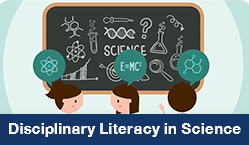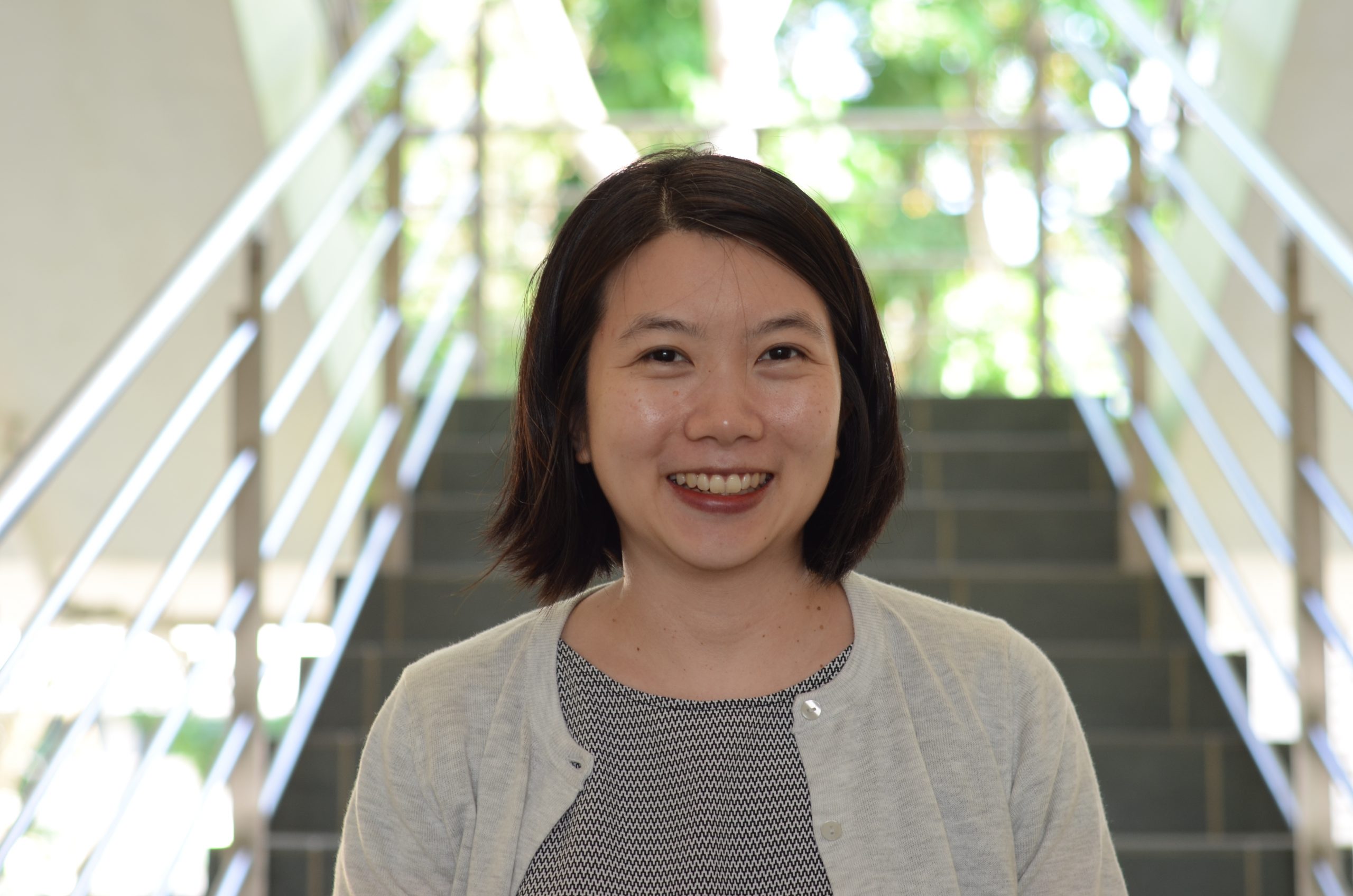Disciplinary Literacy in the Science Classroom
Developing Disciplinary Literacy to Enhance Science Inquiry
![]() How Disciplinary Literacy Instruction Can Help Your Students
How Disciplinary Literacy Instruction Can Help Your Students
- Students were shown to spend significantly more time on important literacy activities that supported science inquiry, e.g. student discussion and writing.
- The PRO (Premise-Reasoning-Outcome) strategy was used to support three aspects of science learning:
-
- learning the specific content of the topic
- phrasing answers for written examination questions
- structuring the reasoning process
-
- Students who used the PRO structure in writing explanations for questions which asked for a scientific explanation:
- scored significantly higher grades for the questions
- reported that the PRO strategy provided them with a useful organisational structure for writing scientific explanations
 Why Disciplinary Literacy?
Why Disciplinary Literacy?
Disciplinary literacy refers to specific ways of using and thinking with the language and representations of a discipline to learn and participate in the discipline. For science education, research has reiterated the central role of disciplinary literacy in helping students access scientific knowledge.
To investigate how teachers may nurture disciplinary literacy in learners, this three-year research involved Secondary Science teachers and students from two schools. Both schools participated in a Whole School Approach to Effective Communication in English (ELIS, 2011) programme which supports teachers’ and students’ effective communication.
The research built on the Biological Sciences Curriculum Study (BSCS) 5E Inquiry Model and integrated the PRO literacy strategy into classroom instruction. PRO strategy guides students in the construction of scientific explanations through identifying the premise/principle, reasoning and outcome. The project also helped students make meaningful connections across multiple modes of representation (e.g. annotations, diagrams), with attention to literacy demands.
 How the Disciplinary Literacy Instruction Model Works
How the Disciplinary Literacy Instruction Model Works
The disciplinary literacy instruction model that was developed was based on the BSCS 5E Inquiry Model with which many science teachers in Singapore are familiar. While keeping the essence of inquiry in the model, there is a focus on literacy, specifically on writing. This “integrated literacy inquiry” model is designed to support the development of both conceptual knowledge and disciplinary literacy skills.
While existing literacy strategies, such as Directed Activities Related to Text (DART), were used, the strategy that was most frequently used was the PRO strategy developed specifically for the project. The PRO strategy guides students in the construction of scientific explanations through identifying the following components of explanations:
- Premise/Principle: a general theory/accepted principle or rule that provides the basis for the explanation
- Reasoning: a chain of logical sequencing of consequences (using additive and consequential conjunctions such as and, first of all, so, because, in order to, et cetera.)
- Outcome: the phenomenon which is being explained
 How Did Students Respond?
How Did Students Respond?
- There was a significant increase in the amount of time students spent on important literacy activities used to support science inquiry:
- framing driving questions;
- conducting experiments and collecting evidence;
- constructing explanations; and
- communicating and evaluating explanations.
- The PRO strategy was used by students to:
- learn the specific content of the topic;
- construct answers for written examination questions; and
- structure the reasoning process.
- Students who used the PRO structure in their written explanations for test/exam questions scored higher grades for these explanations.
 How Can Teachers Get Started?
How Can Teachers Get Started?
Teachers can use the 5E approach to design the inquiry process and activities which involve students in developing literacy skills. For example, students explore real-world phenomena (5E) and construct scientific explanations to explain their observations (scientific literacy). Refer to the document on “The Literacy-infused Inquiry Model”.
Guide students to participate in the following activities:
- Observing/conducting an experiment which illustrates a puzzling phenomenon
- Reading to predict an experimental outcome
- Writing observations and hypotheses
- Translating inscriptions from one form to another (e.g. translating a prose description of an experimental procedure into a flowchart)
- Writing and presenting explanations using the PRO structure (this PRO structure has to be explicitly taught in an earlier science lesson)
- Explaining a new but related phenomenon
- Critiquing peers’ explanations using the PRO structure
For the explanation process using the PRO structure, the basic steps involve the following:
- Teacher teaches the genre of scientific explanation by introducing the general structure of a scientific explanation to the students (through role modelling using examples or asking questions).
-
As the teacher and students become more familiar with the PRO strategy, the teacher places more emphasis on using PRO to help students unpack the underlying logic and casual sequencing of an explanation (across scientific topics and content).
Example: For an illustration of a PRO structure of a typical explanation in secondary school physics and chemistry (“Why does a solid have a fixed shape and volume?”), refer to Tang (2015).
Teachers could also use a multimodal approach to teach science as different modes of representation (e.g. drawing, annotation, graph) represent different aspects of scientific meaning. The different modes enable students to make sense of and internalise what they learn. Teachers could deliberately plan lessons to involve several sequential stages of re-representation. Refer to A Multimodal Approach to Teaching Science for a sample.
For lessons related to Physics and Chemistry, browse these classroom resources.
 Related Links
Related Links
- SingTeach Issue 50 Sep / Oct 2014 “Explaining Science PRO-fessionally”
- SingTeach Issue 50 Sep / Oct 2014 “The Importance of Effective Communication”
- Directed Related Activities Related to Text (DART)
- BSCS 5E Instructional Model
 Further Readings
Further Readings
- Ho, C., Rappa, N. & Tang, K.S. (2018). Meeting disciplinary literacy demands in content learning: The Singapore perspective. In Tang, K.S. & Danielsson, K. (Eds.), Global developments in literacy research for science education (pp.45-60). Switzerland: Springer International Publishing.
- Tang, K.-S. (2015). The PRO instructional strategy in the construction of scientific explanations. Teaching Science, 61(4), 14-21.
- Tang, K. S. 2016. “Constructing scientific explanations through premise-reasoning-outcome (PRO): an exploratory study to scaffold students in structuring written explanations.” International Journal of Science Education 38: 1415-1440.
- Tang, K.-S. K., Ho, C., & Putra, G. B. S. (2016). Developing multimodal communication competencies: A case of disciplinary literacy focus in Singapore. In Hand, B., McDermott, 12 M. & Prain, V. (Eds.), Using multimodal representations to support learning in the Science classroom (pp. 135-158). Switzerland: Springer International Publishing.
 Research Project
Research Project
 Research Team
Research Team
To learn more about this research, please contact oerkmob@nie.edu.sg.
Principal Investigator
-
Dr Tang Kok Sing (formerly of NIE)
Co-Principal Investigator
-
Dr Seah Lay Hoon (formerly of NIE)
- Dr Caroline Ho, English Language Institute of Singapore (ELIS), MOE
Collaborators
- Dr Charles Chew, MOE
-
Dr Natasha Anne Rappa (formerly of MOE)
Research Assistants
- Mr Gde Buana Sandila, NIE
- Ms Jeslyn Lee Jie Yee, NIE
- Mr Zane Lao Zheng Qiao, NIE
- Mr Lim Yu Dian, NIE
School Partners
- Mrs Ken Oh Sihua, CHIJ St. Joseph’s Convent
- Mr Tan Thuan Hock, CHIJ St. Joseph’s Convent
- Mr Sim Yong Ming, Northbrooks Secondary School
- Ms Low Ai Jiao, Northbrooks Secondary School
![]() Acknowledgments
Acknowledgments
This research on Disciplinary Literacy in Science was funded by Singapore Ministry of Education (MOE) under the Education Research Funding Programme (OER 48/12 TKS) and administered by National Institute of Education (NIE), Nanyang Technological University, Singapore. Any opinions, findings, and conclusions or recommendations expressed in this material are those of the author(s) and do not necessarily reflect the views of the Singapore MOE and NIE.
This knowledge resource was written by Dr Jeanne Marie Ho in December 2018; updated by Ms Monica Lim and Mr Jared Martens Wong on 11 January 2022.








